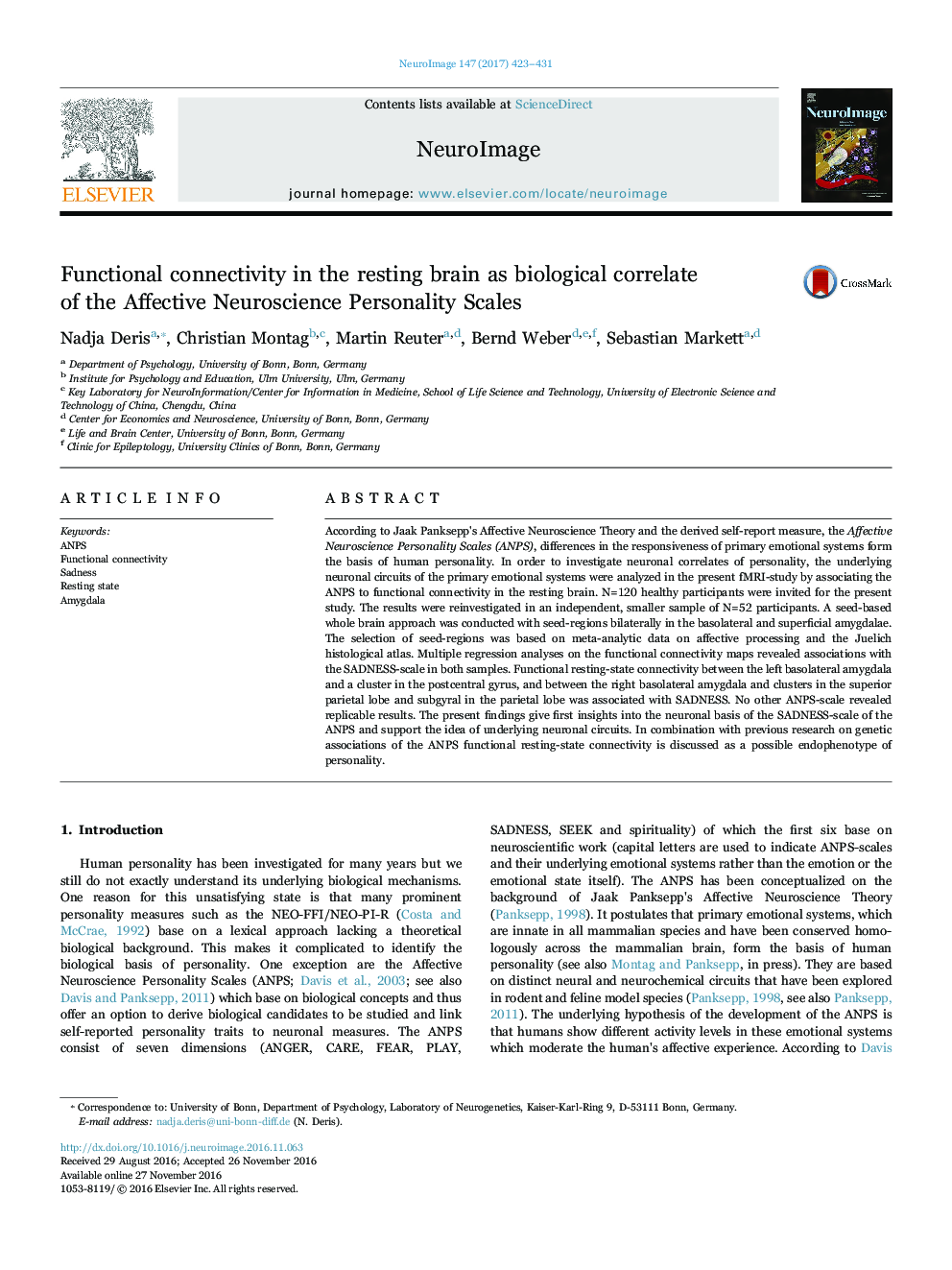| Article ID | Journal | Published Year | Pages | File Type |
|---|---|---|---|---|
| 5631515 | NeuroImage | 2017 | 9 Pages |
â¢The Affective Neuroscience Personality Scales are a new psychometric tool.â¢We investigate their neurobiological correlates using resting-state fMRI.â¢Seed-Regions were selected based on meta-analysis and cytoarchitecture.â¢Connectivity of the basolateral amygdala is linked to SADNESS.â¢Consistent results are obtained in two independent samples.
According to Jaak Panksepp's Affective Neuroscience Theory and the derived self-report measure, the Affective Neuroscience Personality Scales (ANPS), differences in the responsiveness of primary emotional systems form the basis of human personality. In order to investigate neuronal correlates of personality, the underlying neuronal circuits of the primary emotional systems were analyzed in the present fMRI-study by associating the ANPS to functional connectivity in the resting brain. N=120 healthy participants were invited for the present study. The results were reinvestigated in an independent, smaller sample of N=52 participants. A seed-based whole brain approach was conducted with seed-regions bilaterally in the basolateral and superficial amygdalae. The selection of seed-regions was based on meta-analytic data on affective processing and the Juelich histological atlas. Multiple regression analyses on the functional connectivity maps revealed associations with the SADNESS-scale in both samples. Functional resting-state connectivity between the left basolateral amygdala and a cluster in the postcentral gyrus, and between the right basolateral amygdala and clusters in the superior parietal lobe and subgyral in the parietal lobe was associated with SADNESS. No other ANPS-scale revealed replicable results. The present findings give first insights into the neuronal basis of the SADNESS-scale of the ANPS and support the idea of underlying neuronal circuits. In combination with previous research on genetic associations of the ANPS functional resting-state connectivity is discussed as a possible endophenotype of personality.
